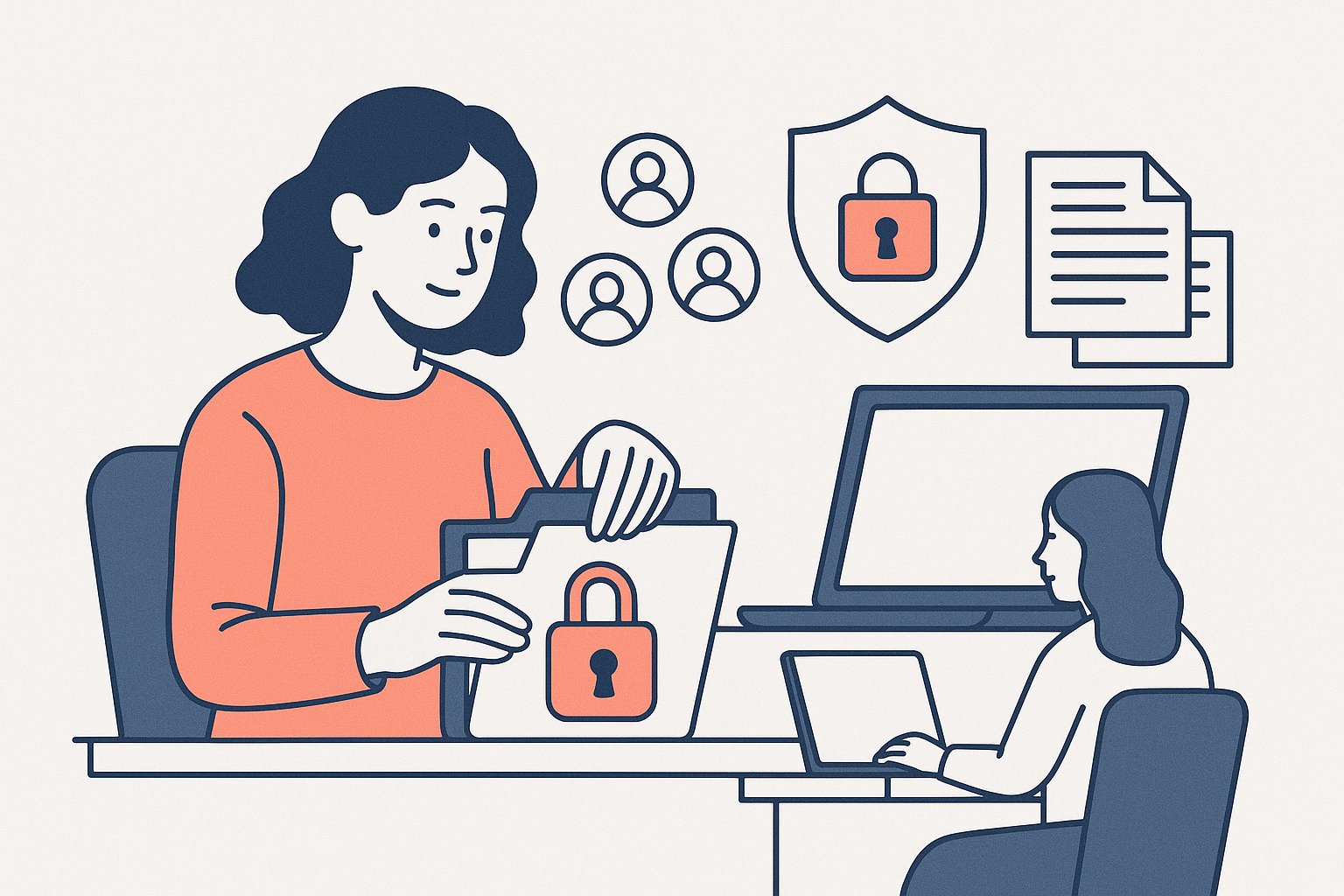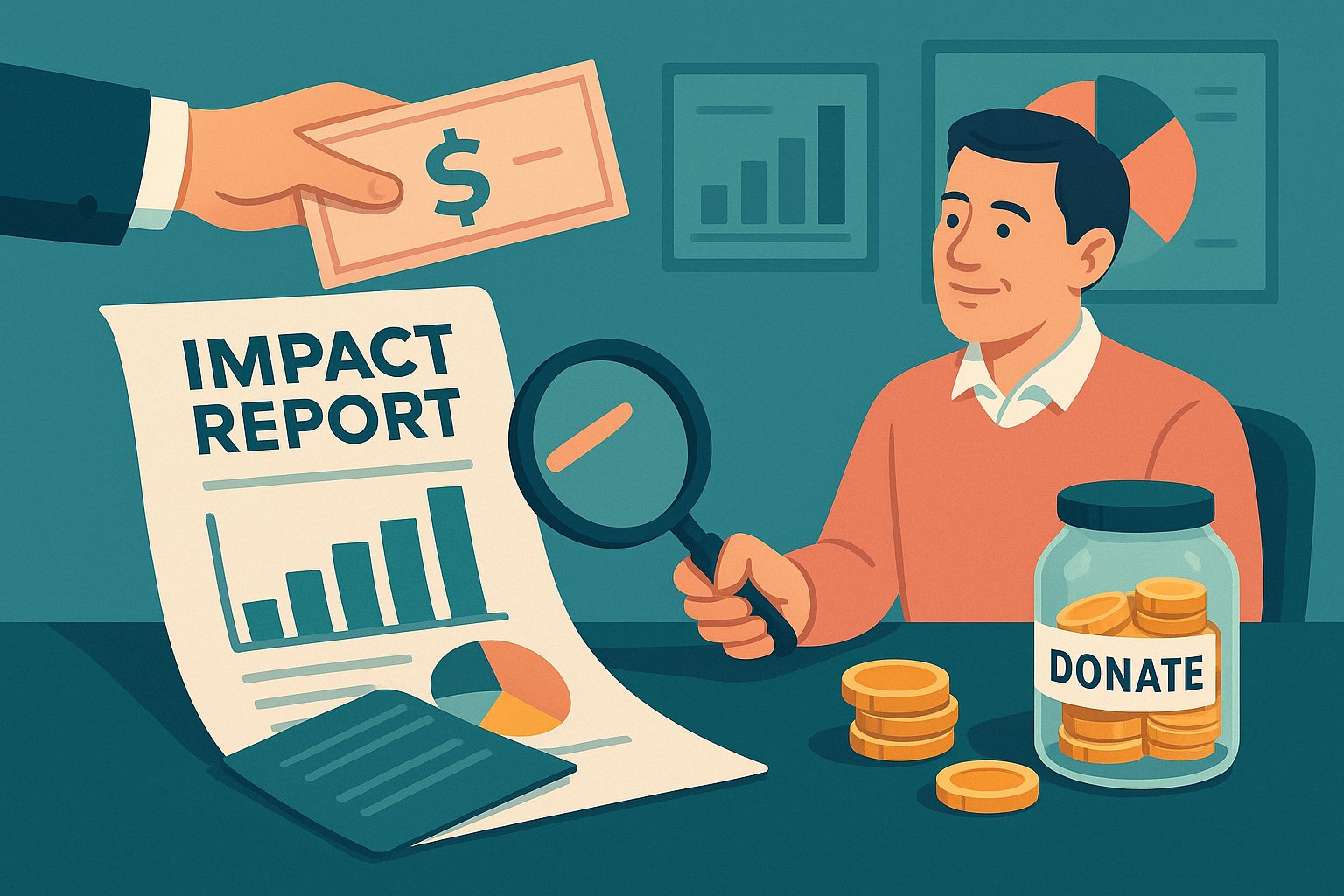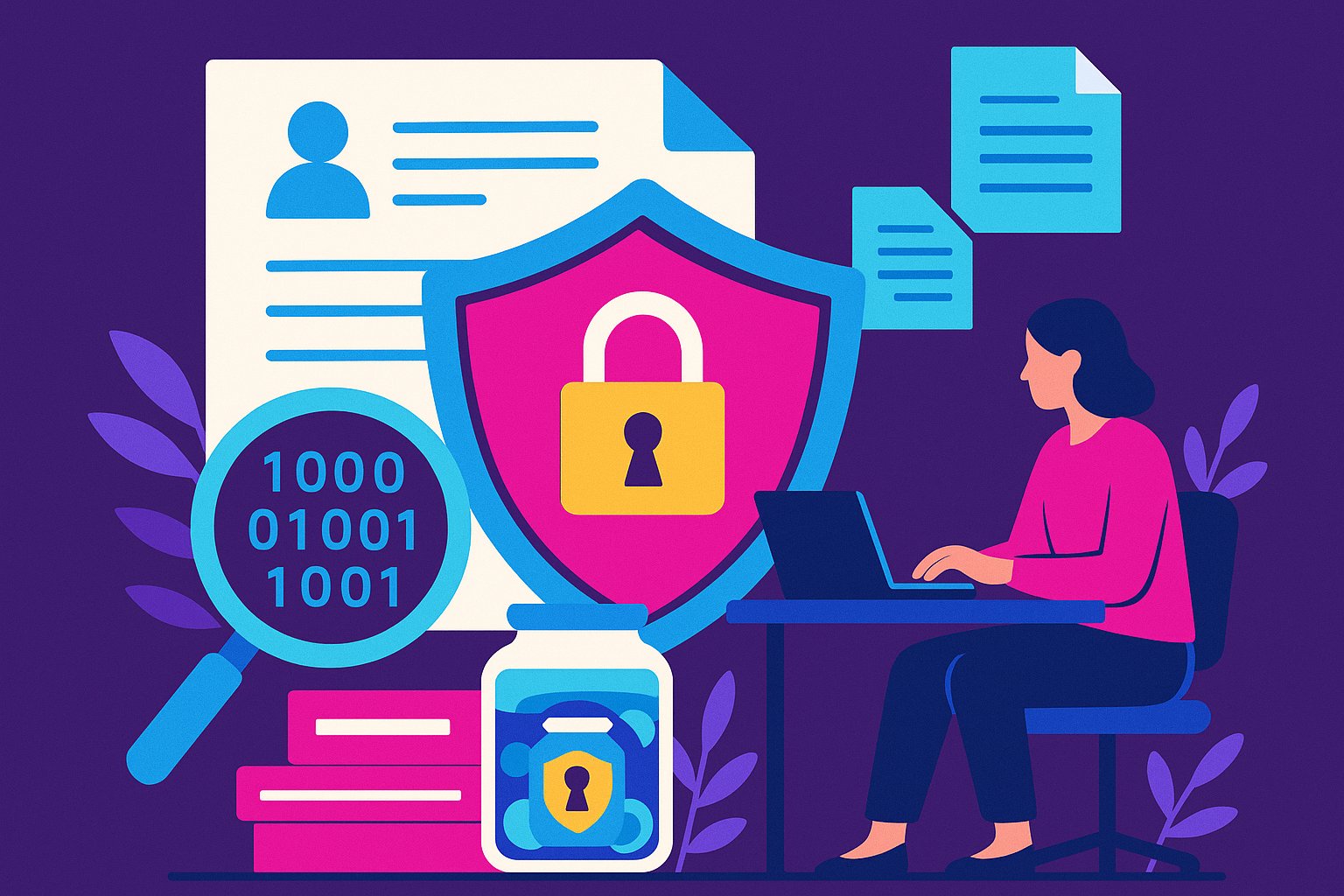Illuminating the Privacy Imperative for Fundraisers
In the digital age, safeguarding personal information has become more critical than ever before. As fundraisers collect data from supporters—names, emails, addresses, and even payment details—they assume a tremendous responsibility to protect that information from breaches, misuse, and unauthorized access. Breached data not only undermines donor trust but can also expose organizations to legal consequences and reputational harm. By proactively adopting robust privacy practices, fundraising professionals can create an environment where supporters feel confident sharing their personal information. This article delves into effective strategies to fortify data protection, ensuring that fundraisers uphold the highest standards of privacy and keep the focus squarely on meaningful impact rather than data mishaps.
Mapping the Privacy Landscape: Understanding the Stakes
Before implementing specific tactics, it’s essential to recognize why privacy matters so profoundly in fundraising. Donors provide their personal information because they believe in a cause—they trust that their data will be handled responsibly. When that trust is violated, even unintentionally, it can erode goodwill and jeopardize long-term relationships. Additionally, stringent regulations—such as the General Data Protection Regulation (GDPR) in Europe and the California Consumer Privacy Act (CCPA) in the United States—demand strict adherence to data protection standards. Failure to comply with these laws can result in hefty fines, legal scrutiny, and negative publicity. Thus, fundraisers must appreciate the multifaceted stakes: ethical obligations toward supporters, legal responsibilities imposed by regulators, and the overarching need to preserve organizational credibility.
Designing Thoughtful Data Collection Processes
Ethical privacy practices begin at the very moment data is collected. When supporters visit an organization’s website or attend an event, they should encounter clear, concise forms that request only the information necessary for intended purposes. For instance, if the goal is to send an e-newsletter, asking solely for an email address suffices—there’s no need for extraneous details like birthdates or mailing addresses in that context. By minimizing the volume of collected data, fundraisers reduce the risk of information overload and limit potential exposure during a breach. Equally important is obtaining explicit, informed consent: every supporter should understand why their data is needed, how it will be used, and where it will be stored. Transparent language—free of jargon and hidden clauses—fosters confidence, as donors know exactly what they are agreeing to when they click “submit.”
Fortifying Digital Channels with Encryption
Once personal information enters the pipeline, protecting it in transit is paramount. Encryption technologies—such as SSL/TLS protocols—ensure that data traveling between a supporter’s device and an organization’s servers remains unreadable to anyone attempting to intercept it. A secure donation page with “https://” in its URL signals to donors that the site encrypts their credit card numbers, names, and email addresses. Fundraising platforms should be vetted for robust security certifications, ensuring they comply with industry standards like the Payment Card Industry Data Security Standard (PCI DSS). This underlying encryption not only blocks cybercriminals from eavesdropping but also bolsters donor confidence by demonstrating that the organization prioritizes confidentiality at every digital touchpoint.
Establishing Secure Storage Protocols
Encryption does not end when data reaches its destination; secure storage is equally vital. Organizations must safeguard databases—whether on-premises servers or cloud platforms—by implementing encryption-at-rest measures. This means personal information is stored in an encrypted format, rendering it unintelligible without the correct decryption keys. Additionally, data should be segmented according to sensitivity, with highly confidential details like full payment information stored separately from less sensitive fields like email addresses. By structuring storage hierarchically, fundraisers can implement tailored access controls, limiting which staff members are permitted to view or modify specific datasets. Regular vulnerability assessments and patch updates further strengthen the digital moat, ensuring that known security gaps are addressed before they become exploitable.
Cultivating a Culture of Access Control
Human error remains a leading cause of data breaches, often stemming from overly broad or outdated access privileges. To mitigate this risk, fundraisers must adopt the principle of least privilege—granting employees and volunteers only the minimum level of access necessary to perform their roles. For example, a social media coordinator marketing an upcoming gala needs aggregate donor statistics but does not require access to detailed payment histories. Role-based access controls (RBAC) can automate permission assignments, reducing the likelihood of manual misconfigurations. Furthermore, implementing multi-factor authentication (MFA) for any internal systems that store personal information adds an extra layer of defense: even if a password is compromised, unauthorized users cannot easily infiltrate the system without an additional verification step. By making access control a core component of organizational culture, fundraisers reinforce the expectation that personal information is to be treated with utmost care.
Training Staff and Volunteers in Privacy Best Practices
Technical safeguards alone cannot guarantee the security of personal information; people must understand and embrace privacy protocols. Regular training sessions help fundraisers and volunteers recognize phishing attempts, practice secure password management, and handle supporter data responsibly. For instance, employees should know never to send unencrypted spreadsheets of donor addresses via email or to discuss supporter details over unsecured communication channels. Interactive workshops—complete with real-world scenarios and quizzes—reinforce these lessons and empower team members to act as vigilant guardians of privacy. Periodic refreshers ensure that new staff members are brought up to speed and long-time personnel remain mindful of evolving cyber threats. When privacy awareness permeates every level of the organization, fundraisers create an environment where people, not just technology, serve as first-line defenders against data mishaps.
Crafting Clear Privacy Policies and Disclosures
Transparency is a linchpin of donor trust. Crafting a well-written privacy policy, displayed prominently on your website and linked across all donation forms, offers supporters a clear understanding of how their data will be processed, stored, and shared. Rather than burying lengthy legalese in fine print, fundraisers should present key takeaways—such as retention periods, third-party sharing practices, and rights to access or delete personal data—in a concise, readable format. When donors can easily find answers to questions like “Will my contact information be shared with partners?” or “How long will you retain my donation history?” they feel more comfortable engaging with the organization. Including dedicated sections on security measures—such as encryption protocols and access controls—further demonstrates commitment to privacy. By maintaining an up-to-date policy and notifying supporters promptly of any revisions, fundraisers reinforce the ongoing nature of their data stewardship obligations.
Streamlining Data Retention and Deletion Protocols
In addition to collecting and storing data responsibly, fundraisers must enact clear rules regarding how long personal information is retained and how it is disposed of when no longer needed. Implementing a data retention schedule helps ensure that outdated or unnecessary information is deleted in a timely manner. For example, if a supporter unsubscribes from email updates and has not made a donation or engagement for more than five years, their contact information could be purged from active databases, relegated to an archived format if legally required, or deleted entirely if permissible. Secure deletion techniques—such as cryptographic wiping methods—prevent data from being recoverable once marked for removal. By minimizing the volume of stored data, organizations not only reduce their exposure to breach risks but also demonstrate respect for donor preferences, honoring requests to be forgotten or removed from marketing lists.
Ensuring Safe Communication Channels with Supporters
Fundraisers rely on email, phone calls, and occasionally SMS to follow up with donors and share campaign updates. Securing these communication channels is essential to prevent phishing, spoofing, or inadvertent leaks. When sending sensitive attachments—such as financial reports or donor lists—fundraisers should encrypt files or use secure file-sharing portals rather than standard email attachments. If donors are asked to provide additional details, include instructions for uploading documents to password-protected web forms rather than responding directly to email. Additionally, staff members should verify unusual or unexpected requests purportedly from donors before fulfilling them; for instance, a last-minute change in payment details might indicate a fraudulent attempt to reroute funds. By establishing standard operating procedures that prioritize encrypted communication and verification processes, fundraisers reduce the risk of sensitive information slipping into the wrong hands.
Navigating Third-Party Integrations with Caution
Fundraising often involves a constellation of third-party platforms—payment processors, customer relationship management (CRM) software, email marketing tools, and event registration systems. While these integrations streamline operations, they also introduce potential vulnerabilities. Before partnering with any vendor, conduct due diligence to confirm their security credentials, such as SOC 2 Type II certifications, GDPR compliance, or ISO 27001 accreditation. Review contractual agreements to ensure that the third party pledges not to misuse or improperly share personal data. When integrating platforms via application programming interfaces (APIs), ensure that encryption keys and access tokens are stored securely and rotated periodically. For any data transferred between systems, verify that transmission protocols are encrypted end-to-end. By exercising caution and maintaining rigorous oversight of vendor relationships, fundraisers can enjoy the efficiency of modern tools without compromising donor privacy.
Responding Swiftly to Potential Breaches
Even the most diligent fundraisers may face unexpected security incidents. In these moments, transparency and rapid response are crucial. Establishing a comprehensive incident response plan ensures that everyone on the team knows their role: whom to contact internally, how to contain the breach, and when to notify relevant authorities or supporters. Depending on jurisdiction and the type of breach, organizations may be legally required to inform affected donors within a defined timeframe—often 72 hours under GDPR. When communicating about a breach, provide succinct, factual information: describe what happened, what data may have been impacted, and the steps being taken to rectify the situation. Offer guidance to supporters on measures they can take—such as monitoring bank statements or changing passwords—while reserving judgment about liability until a thorough investigation is complete. A transparent, empathetic response can mitigate reputational damage and reassure donors that the organization remains committed to safeguarding their personal information, even when lapses occur.
Educating Donors to Strengthen Collective Security
Fundraising organizations have a shared responsibility with donors to maintain a secure environment. By providing guidance on safe digital habits—such as recognizing phishing emails or setting strong, unique passwords—fundraisers empower supporters to protect their own data. Consider including brief privacy tips in newsletters or hosting short webinars on digital security basics. While your organization may implement top-tier encryption and secure storage, a donor’s account could still be compromised if they reuse a weak password across multiple sites. By encouraging best practices—like regular password updates and enabling multi-factor authentication on personal email accounts—you foster a collaborative approach to data protection. This shared vigilance not only fortifies the fundraising ecosystem but also reinforces the notion that privacy is a collective endeavor, where both organizations and individuals play pivotal roles in preserving security.
Balancing Personalization with Respectful Privacy
In a competitive fundraising landscape, personalization can boost engagement by delivering targeted messages that resonate with a donor’s past involvement or interests. However, this personalization must be calibrated carefully to avoid infringing on privacy boundaries. Accessing detailed giving histories or tracking online behaviors can yield useful insights, but it also risks making supporters feel surveilled. To strike a balanced approach, limit profiling to data the donor has willingly shared, such as their involvement preferences or volunteer history. When using this information to craft segmented email campaigns, ensure that messaging does not reveal overly intimate details—like referencing a specific campaign they contributed to years ago—unless you receive explicit permission. Whenever possible, invite donors to update their own profiles, specifying how they wish their information to be used. By giving supporters agency over their data, fundraisers demonstrate respect and cultivate a sense of partnership rather than passive surveillance.
Choosing Privacy-Friendly Fundraising Technologies
As emerging technologies—such as artificial intelligence and predictive analytics—become mainstream, fundraisers face the temptation to leverage every available tool for optimizing donor outreach. While these innovations offer powerful capabilities, they also introduce complex privacy considerations. Before adopting new solutions, pause to evaluate whether the technology aligns with your organization’s privacy values. Does an AI-driven platform aggregate donor data from external sources beyond your control? Does a predictive analytics tool require sharing information with partners whose practices may diverge from your own standards? By conducting privacy impact assessments—which analyze potential risks, benefits, and mitigation strategies—you can make informed decisions about technology adoption. In many cases, simpler, privacy-centric alternatives may suffice, offering peace of mind that personal information remains under tight organizational control while still delivering effective fundraising outcomes.
Aligning Practices with Evolving Regulations
Privacy regulations are far from static; they shift in response to new threats, societal expectations, and political pressures. Fundraisers must remain vigilant, monitoring updates from regulatory bodies—such as the Federal Trade Commission (FTC) in the U.S. or national data protection authorities in other regions—and adjusting policies accordingly. For example, new legislation might mandate shorter data retention windows, stricter consent requirements for minors, or additional disclosures around data-sharing practices. Regular consultations with legal advisors, membership in professional associations, and attendance at privacy-focused conferences help organizations stay informed. By weaving adaptability into privacy protocols—rather than treating policies as written-in-stone artifacts—fundraisers demonstrate a proactive commitment to compliance. This flexibility not only shields the organization from potential penalties but also assures supporters that their data is always managed under the most current, responsible guidelines.
Cultivating a Culture of Continuous Improvement
Privacy is not a one-time checklist; it’s an ongoing, evolving journey that demands regular evaluation, training, and refinement. Annual privacy audits—conducted internally or by independent third parties—help uncover latent vulnerabilities and measure the efficacy of implemented controls. Soliciting feedback from donors through surveys or focus groups can offer valuable insights into how supporters perceive your privacy commitments and where they might feel anxious. By establishing a dedicated privacy committee or appointing a data protection officer within the fundraising team, organizations send a clear signal that privacy is a perpetual priority rather than an afterthought. When fundraisers embrace continuous improvement—incorporating new best practices, technologies, and donor feedback—they reinforce a culture that values personal information as an invaluable trust asset, safeguarding it for the benefit of both supporters and the organization’s mission.
Charting the Course to Lasting Donor Confidence
By integrating robust safeguards—ranging from selective data collection and end-to-end encryption to staff training and adaptive regulatory compliance—fundraisers lay the groundwork for enduring donor trust. Each layer of privacy protection signifies respect for supporters’ personal information, highlighting an organization’s commitment to ethical stewardship. In turn, donors feel secure engaging with campaigns, confident that their data is treated with the same care and diligence that drives the mission itself. As fundraising landscapes evolve—marked by rapid technological advances and shifting regulatory priorities—organizations that champion privacy practices will stand out, attracting supporters who value both impact and integrity. Ultimately, safeguarding personal information serves not only as a compliance checklist but as a core expression of respect, reinforcing the shared belief that every contribution matters and that every donor deserves unwavering protection.




